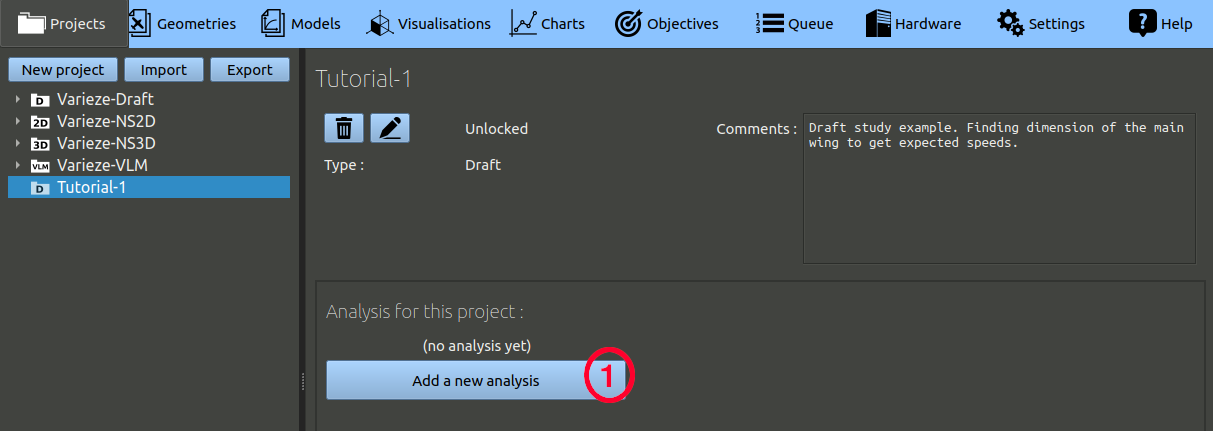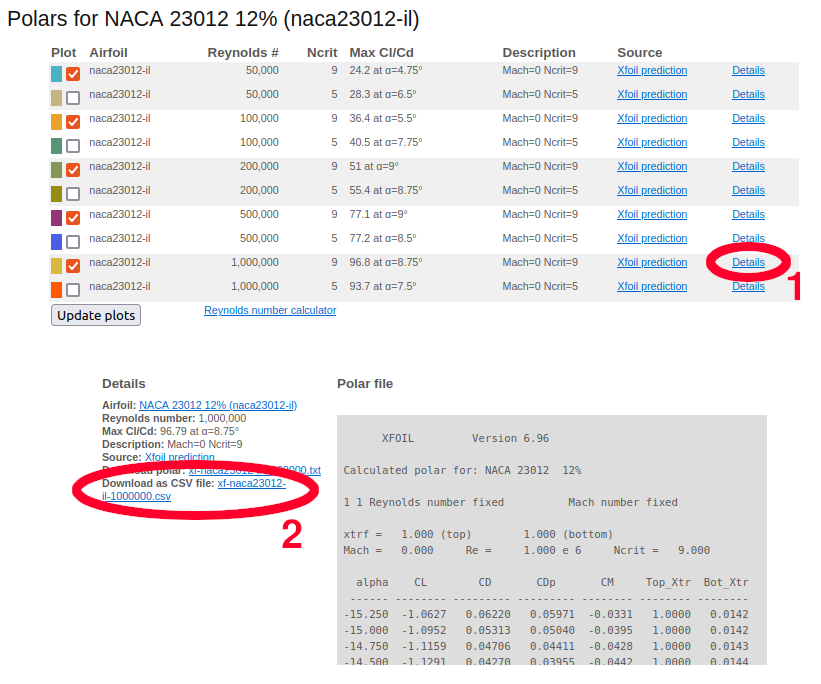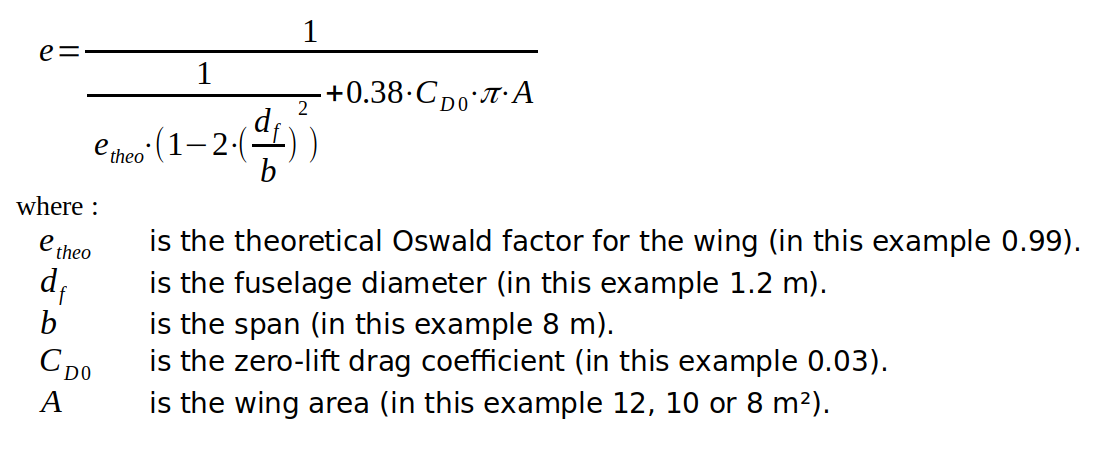In a project, we can create several analysis. An analysis is a set of computations made from an aircraft design, giving an estimation of its aerodynamic performances.
In a 'Draft' project, there is only one type of analysis available, also called 'Draft'.
The specifications indicates we cannot have a span larger than 8 meters. So we must determine the ideal mean chord length that will give us a cruise speed and a stall speed close to what is expected in the specifications.
We will create 3 analysis all corresponding to a 8 meters span aircraft, with the respecting chords:
- a 12 m² wing area (1.5m mean chord)
- a 10 m² wing area (1.25m mean chord)
- a 8 m² wing area (1m mean chord)
For each analysis, proceed as described below.
First, click the 'Add a new analysis' button.

- Fill up the parameters according to the summary table given below.
- Click the 'Read' button to import a .csv file. This file must contain the CL values of an airfoil for various angle of attack. Click the (?) button for more details. In our case we can download the file for the Naca 23012 airfoil from airfoiltools.com (Cf. next image below)
- Click the 'Create' Button to finish.
- To create another analysis, click on the project in the tree on the left side of the screen

Here is how a .csv file can be downloaded from airfoiltools.com. On the website, search for the airfoil you desire, then click the following links:

Here is a summary of values you can use for the 3 analysis:

The cdmin value of 0.03 was chosen because this is a realistic average value for general aviation (0.04 is relatively easy to achieve value, even with a fixed landing gear, bracing struts and wires, as seen on old biplanes for examples. A value of 0.02 corresponds to a very streamlined aircraft with very low parasitic drag, such as WWII dogfighters).
There are many ways of estimating the Oswald efficiency factor. In Our case we used Kroo's approach, which can be boiled-down to the following formula:





